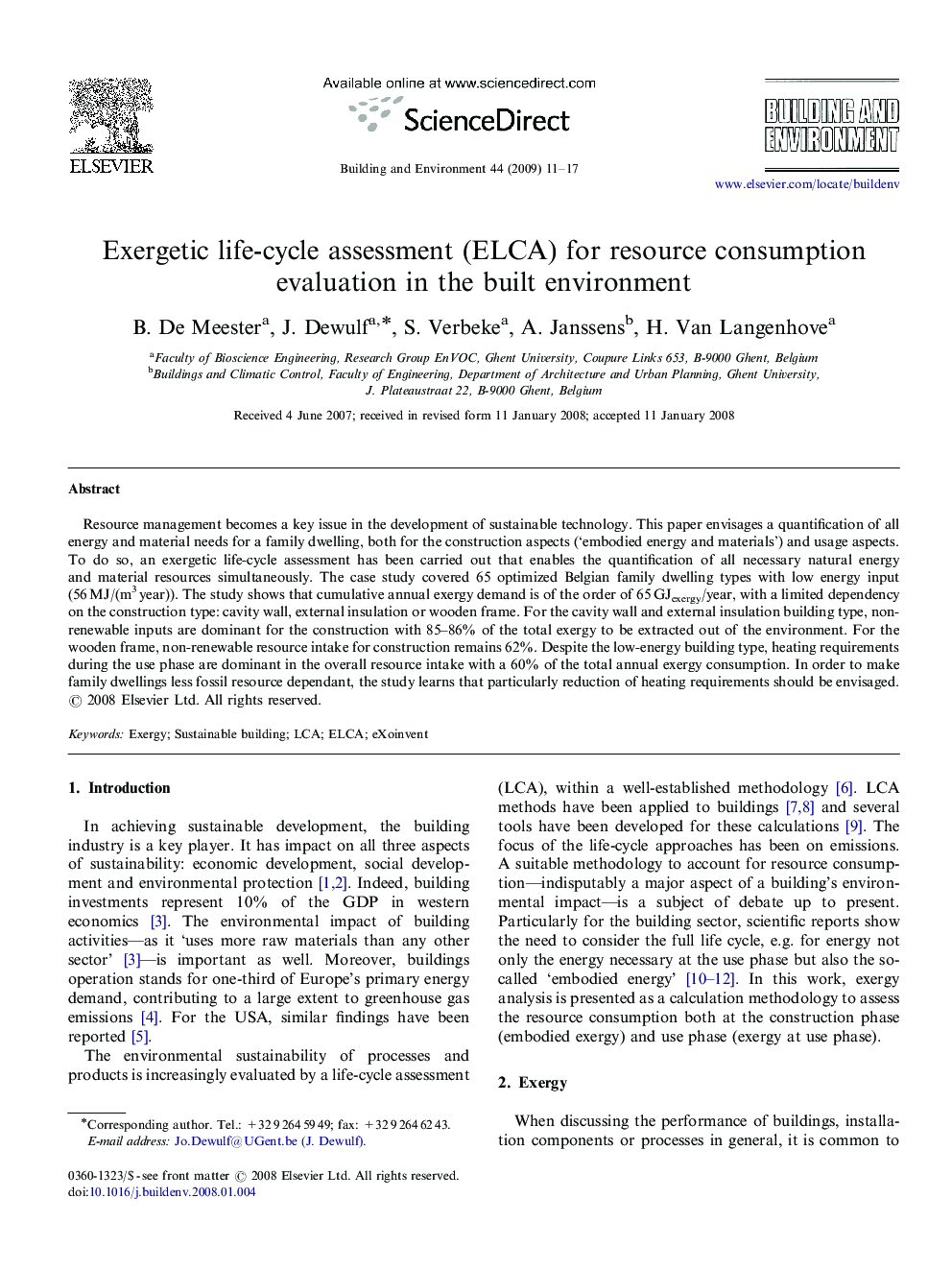| Article ID | Journal | Published Year | Pages | File Type |
|---|---|---|---|---|
| 249786 | Building and Environment | 2009 | 7 Pages |
Resource management becomes a key issue in the development of sustainable technology. This paper envisages a quantification of all energy and material needs for a family dwelling, both for the construction aspects (‘embodied energy and materials’) and usage aspects. To do so, an exergetic life-cycle assessment has been carried out that enables the quantification of all necessary natural energy and material resources simultaneously. The case study covered 65 optimized Belgian family dwelling types with low energy input (56 MJ/(m3 year)). The study shows that cumulative annual exergy demand is of the order of 65 GJexergy/year, with a limited dependency on the construction type: cavity wall, external insulation or wooden frame. For the cavity wall and external insulation building type, non-renewable inputs are dominant for the construction with 85–86% of the total exergy to be extracted out of the environment. For the wooden frame, non-renewable resource intake for construction remains 62%. Despite the low-energy building type, heating requirements during the use phase are dominant in the overall resource intake with a 60% of the total annual exergy consumption. In order to make family dwellings less fossil resource dependant, the study learns that particularly reduction of heating requirements should be envisaged.
